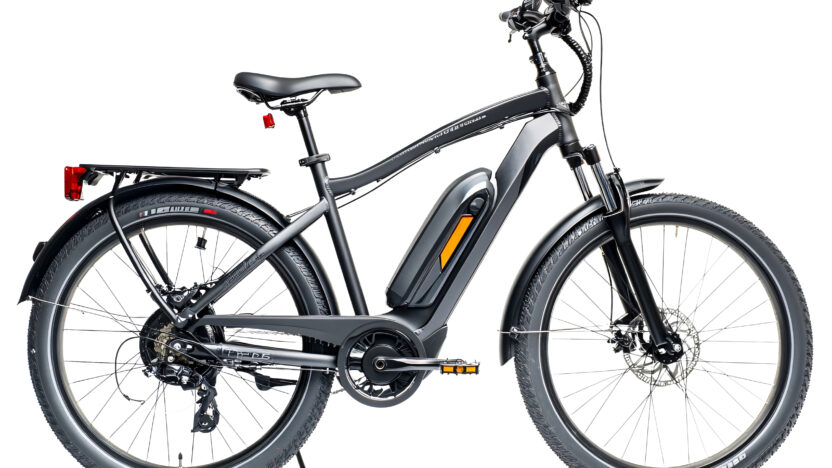Electric bikes have become increasingly popular as eco-friendly, efficient, and fun transportation options. Among the many brands and styles on the market, Wisper Electric Bikes and foldable electric bike stand out for their unique features and practical benefits. Whether commuting, running errands, or enjoying weekend rides, these e-bikes can transform your cycling experience.
But before investing in a new electric bike, conducting a thorough DIY audit is essential. This guide will walk you through the key factors to evaluate so you can make an informed purchase, especially when considering Wisper electric bikes or foldable models.
Understand Your Riding Needs
Start with assessing your daily usage and riding environment. This will help determine which bike suits you best.
Distance & Terrain:
Will you use the bike mainly for short city rides, commutes, or off-road trails? Wisper bikes typically offer models optimised for urban and suburban areas. Foldable e-bikes excel in portability and are ideal for mixed transport or compact storage.
Frequency:
How often will you use the bike? Daily commuters need durability and battery life, while occasional riders might prioritise lightweight design.
Storage Space:
If you have limited space at home or work, foldable bikes offer a practical solution. Wisper’s standard models may require more storage, but often provide greater comfort and power.
Research the Brand and Model Options
Wisper Electric Bike
Wisper is known for quality and reliability, with a range of models that balance performance and comfort. Key features include:
- Powerful motors for smooth acceleration
- Long-lasting batteries with good range (typically 30-60 miles per charge)
- Comfortable frame geometry suited for various rider heights
- Accessory options like racks, lights, and mudguards
Foldable Electric Bike
Foldables are prized for compactness and ease of transport. When researching models:
- Look for folding mechanisms that are secure and easy to operate.
- Check the weight, especially if you carry the bike upstairs or on public transport.
- Review battery capacity and motor power since foldables sometimes have smaller batteries due to size constraints.
Inspect Battery and Motor Specifications
Battery Capacity:
Higher capacity, measured in Watt-hours (Wh), means a longer range. Wisper bikes often have larger batteries than compact foldables, so decide if you prioritise distance or portability.
Charging Time:
Understand how long it takes the battery to charge fully. Some e-bikes feature removable batteries for convenient charging indoors.
Motor Type & Power:
Motors usually range from 250W to 500W or more. Higher wattage means more power and better hill climbing, but may affect battery life.
Battery Warranty:
Check the manufacturer’s warranty on the battery, as replacements can be costly.
Evaluate Build Quality and Components
A DIY audit should thoroughly examine the bike’s build and parts.
Frame Material:
Most e-bikes use aluminium or steel frames. Aluminium is lightweight and corrosion-resistant, while steel offers durability and shock absorption, but is heavier.
Brakes:
Reliable stopping power is critical. Disc brakes (mechanical or hydraulic) are preferred for e-bikes due to better performance in various weather conditions.
Gears:
Check the number and type of gears. Multiple gears help with speed control and hill climbing.
Tires:
Wider tires offer more comfort and stability, especially on rough roads. Foldables may have smaller wheels, affecting ride feel.
Examine Charging and Battery Maintenance
Knowing how to care for the battery extends the life of your e-bike.
Charging Setup:
Check if the charger is included and compatible with your local voltage.
Battery Removal:
Removable batteries are convenient for indoor charging and theft prevention.
Storage Advice:
Learn proper storage techniques during winter or prolonged inactivity (e.g., partially charged batteries in cool, dry places).
Understand Warranty and After-Sales Support
Before committing to a purchase:
Warranty Coverage:
Check what is covered (frame, battery, motor, components) and for how long.
Service Centres:
Identify authorised service providers near you.
Spare Parts Availability:
Easy access to replacement parts reduces downtime.
Budgeting and Final Decision Making
Electric bikes range widely in price. Due to their features and quality, Wisper bikes may be found at mid- to high-price points, while foldable bikes can vary from budget-friendly to premium.
Compare Prices:
Look at what you get for the price — motor power, battery range, build quality, warranty.
Additional Costs:
Factor in accessories, maintenance, and potential battery replacement.
Long-Term Value:
A well-built e-bike with a solid warranty often offers better value than a cheaper, less reliable option.
Conclusion:
Conducting a DIY audit before buying a Wisper Electric Bike or a Foldable Electric Bike ensures you choose a model that fits your lifestyle, budget, and riding conditions. From understanding your needs to evaluating technical specs, build quality, and after-sales service, taking the time upfront will save you from costly mistakes and disappointment.
By following this guide, you’ll be well-prepared to invest confidently in an electric bike that keeps you riding smoothly and sustainably for years.



